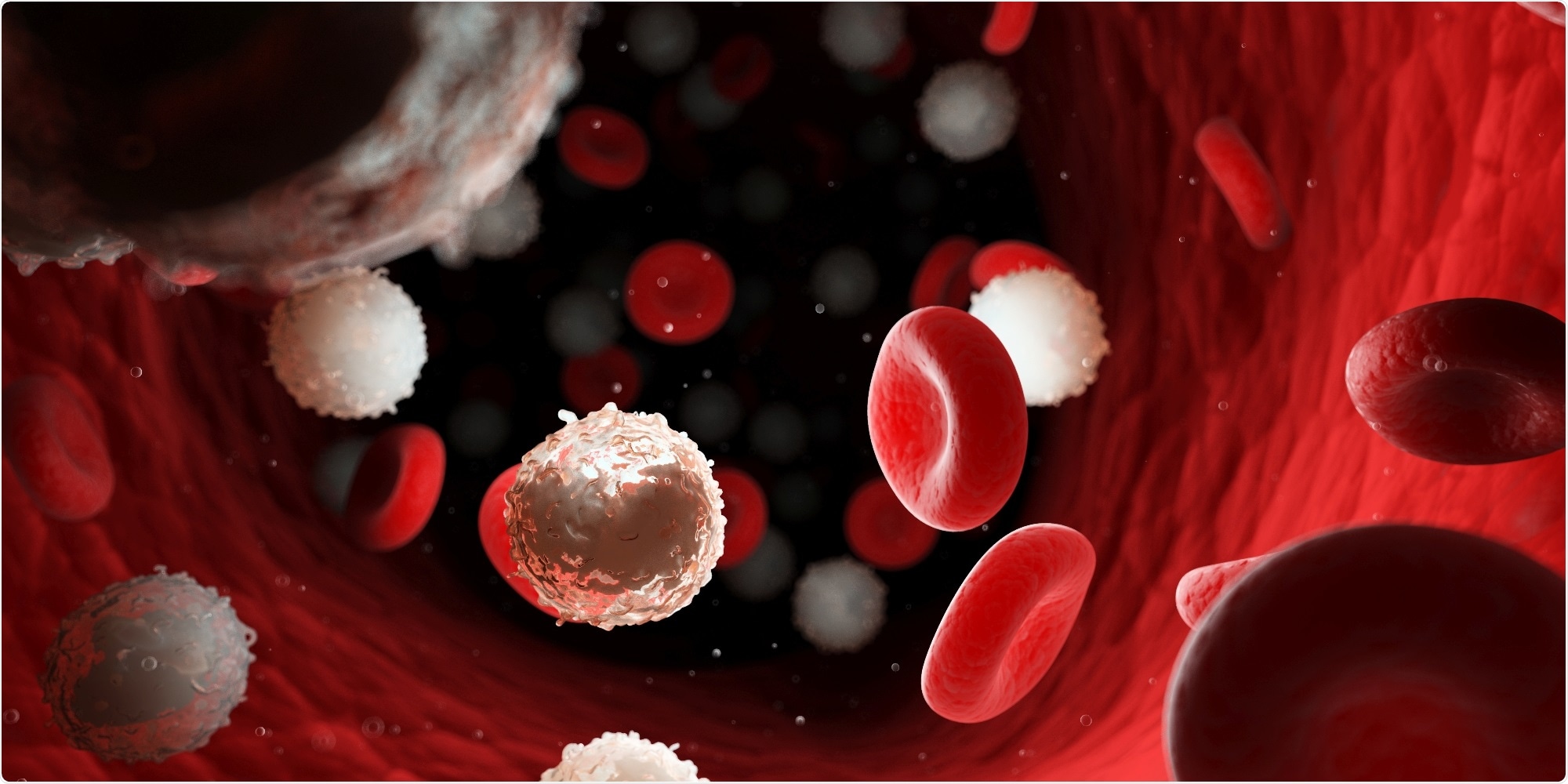A typical trait of all stem cells is their potential to renew on their own; however, scientists are unsure about how this ability is sustaining throughout life.

Their self-renewal potential is the prerequisite for blood stem cells to provide sufficient replenishment of mature blood cells for decades. Image Credit: © Adobe Stock.
Now, researchers from the German Cancer Research Center (DKFZ) and the Heidelberg Institute for Stem Cell Technology and Experimental Medicine (HI-STEM) have discovered in mice that cells in the supposed “stem cell niche” are actually responsible for this: a factor produced by the niche blood vessel cells activates the blood stem cells and thereby sustains their self-renewal ability. During the aging process, this factor is no longer produced and blood stem cells start to age.
Blood stem cells in the bone marrow make sure that the human body is sufficiently provided with mature blood cells throughout life. If there is no present requirement for cell replenishment, the blood stem cells stay in a deep sleep to shield themselves from genome damage, which can result in cancer.
Inflammations, blood loss, and infections serve like an alarm clock: the blood stem cells promptly start to divide and create new cells—for instance, to provide an ability to the immune cells to combat viruses or to offset a loss of platelets or red blood cells.
Moreover, the stem cells always regenerate themselves with each division of cells, so that the stem cell pool is preserved. This is referred to as self-renewal by scientists.
The dormancy is the prerequisite for this unique ability of stem cells. Without self-renewal, there is no cancer.”
Andreas Trumpp, Stem Cell Expert, German Cancer Research Center and Heidelberg Institute for Stem Cell Technology and Experimental Medicine
The virtually infinite self-renewal ability is believed to be a major property of the very rare stem cells, which have a key role to play in the repair and maintenance of organs and tissues. But cancer cells also have this potential. They directly derive from stem cells or achieve this potential via genetic changes.
Headed by Andreas Trumpp, a research team wanted to determine which kinds of molecular signals regulate the self-renewal potential. In their present studies, the team observed in mice that dormant blood stem cells transport huge amounts of the receptor, called protein neogenin-1 (Neo-1), on their surface. On the other hand, this receptor is not produced by other blood cells.
Additional studies demonstrated that the Neo-1 protein is a crucial molecule for self-renewal—if the team genetically turned off the receptor in mice, the stem cells did not sleep anymore, thus losing their potential to renew on their own, and the hematopoietic system of the animals exhausted prematurely.
The Neo-1 receptor allows the stem cell to receive outer signals. However, the origin of these significant signals, which are crucial for the self-renewal potential, is not known. Therefore, the team analyzed the signal molecule, called netrin-1, as the activator and binding partner of the Neo-1 receptor. The endothelial cells lining the fine blood vessels in the bone marrow produce Netrin-1.
We genetically knocked out netrin-1 in the stem cell niche of mouse bone marrow. The blood stem cells then lost the ability to self-renew. In contrast, when netrin-1 production was experimentally increased, they slept all the more deeply.”
Simon Renders, Study First Author, German Cancer Research Center
Investigators refer to the structures in the immediate environment of stem cells as a stem cell niche. This niche can contain both cellular and non-cellular constituents and has a significant effect on the fate and functions of blood stem cells. Also part of the niche is Netrin-1-bearing cells of blood capillaries.
Our results reconfirm the central role of the stem cell niche for stem cell function and thus for the regenerative capacity and health of our body.”
Andreas Trumpp, Stem Cell Expert, German Cancer Research Center and Heidelberg Institute for Stem Cell Technology and Experimental Medicine
Scientists could also trace the age-related depletion of the hematopoietic system in the animals—with age, the bone marrow modifies its structure, and the small blood vessels degenerate. The team used older mice and were able to demonstrate that this is accompanied by a loss of the netrin-1 signal molecule.
At first, the blood stem cells attempt to offset this lack of their crucial signal generator by boosting the formation of Neo-1. But with increasing age, such compensation is not sufficient anymore, and the hematopoietic system more and more loses its self-renewal ability. The outcome of these changes is a progressively weaker immune system in old age.
Source:
Journal reference:
Renders, S., et al. (2021) Niche derived netrin-1 regulates hematopoietic stem cell dormancy via its receptor neogenin-1. Nature Communications. doi.org/10.1038/s41467-020-20801-0.